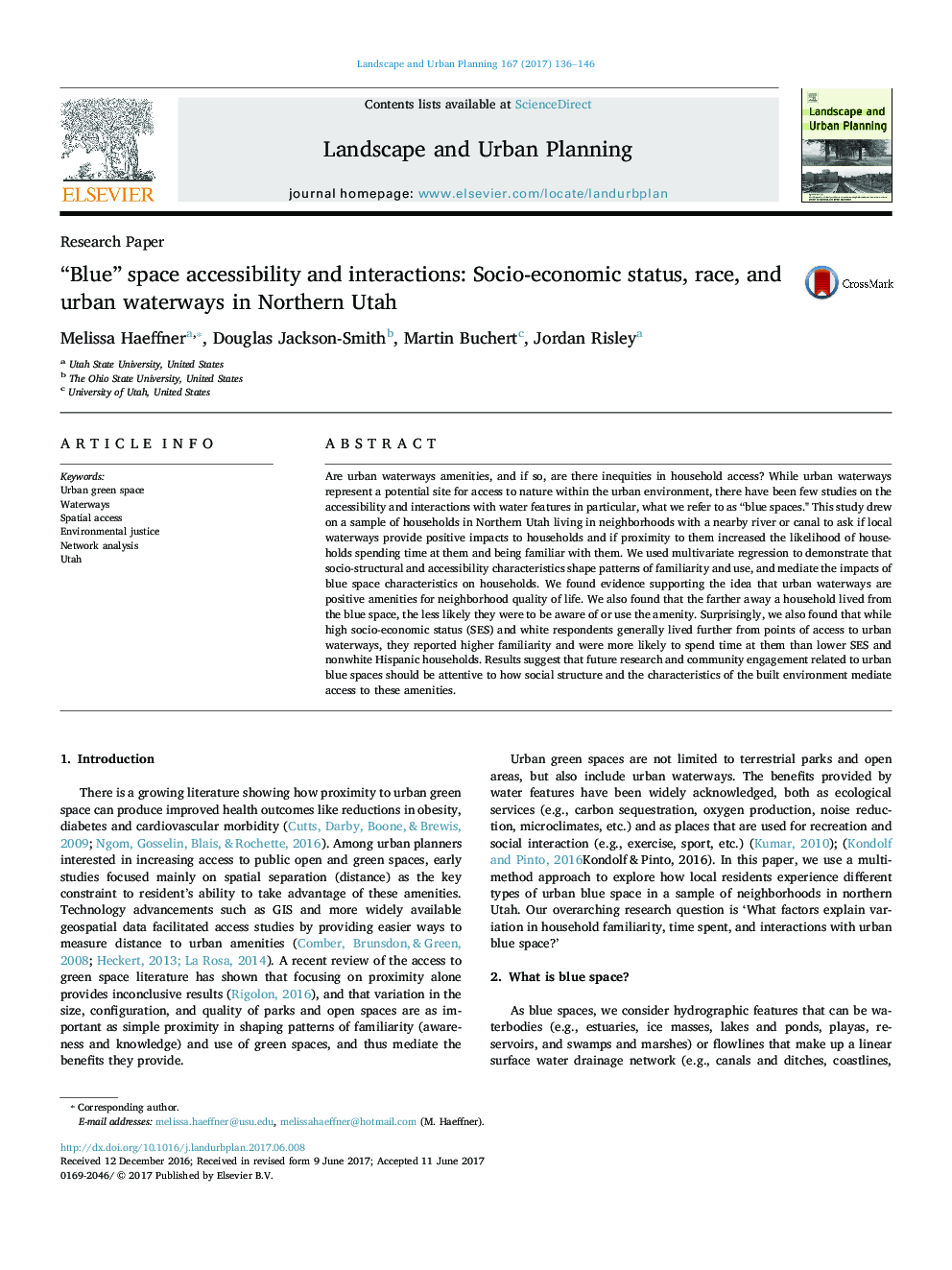| Article ID | Journal | Published Year | Pages | File Type |
|---|---|---|---|---|
| 5114945 | Landscape and Urban Planning | 2017 | 11 Pages |
Abstract
Are urban waterways amenities, and if so, are there inequities in household access? While urban waterways represent a potential site for access to nature within the urban environment, there have been few studies on the accessibility and interactions with water features in particular, what we refer to as “blue spaces." This study drew on a sample of households in Northern Utah living in neighborhoods with a nearby river or canal to ask if local waterways provide positive impacts to households and if proximity to them increased the likelihood of households spending time at them and being familiar with them. We used multivariate regression to demonstrate that socio-structural and accessibility characteristics shape patterns of familiarity and use, and mediate the impacts of blue space characteristics on households. We found evidence supporting the idea that urban waterways are positive amenities for neighborhood quality of life. We also found that the farther away a household lived from the blue space, the less likely they were to be aware of or use the amenity. Surprisingly, we also found that while high socio-economic status (SES) and white respondents generally lived further from points of access to urban waterways, they reported higher familiarity and were more likely to spend time at them than lower SES and nonwhite Hispanic households. Results suggest that future research and community engagement related to urban blue spaces should be attentive to how social structure and the characteristics of the built environment mediate access to these amenities.
Related Topics
Life Sciences
Agricultural and Biological Sciences
Ecology, Evolution, Behavior and Systematics
Authors
Melissa Haeffner, Douglas Jackson-Smith, Martin Buchert, Jordan Risley,
